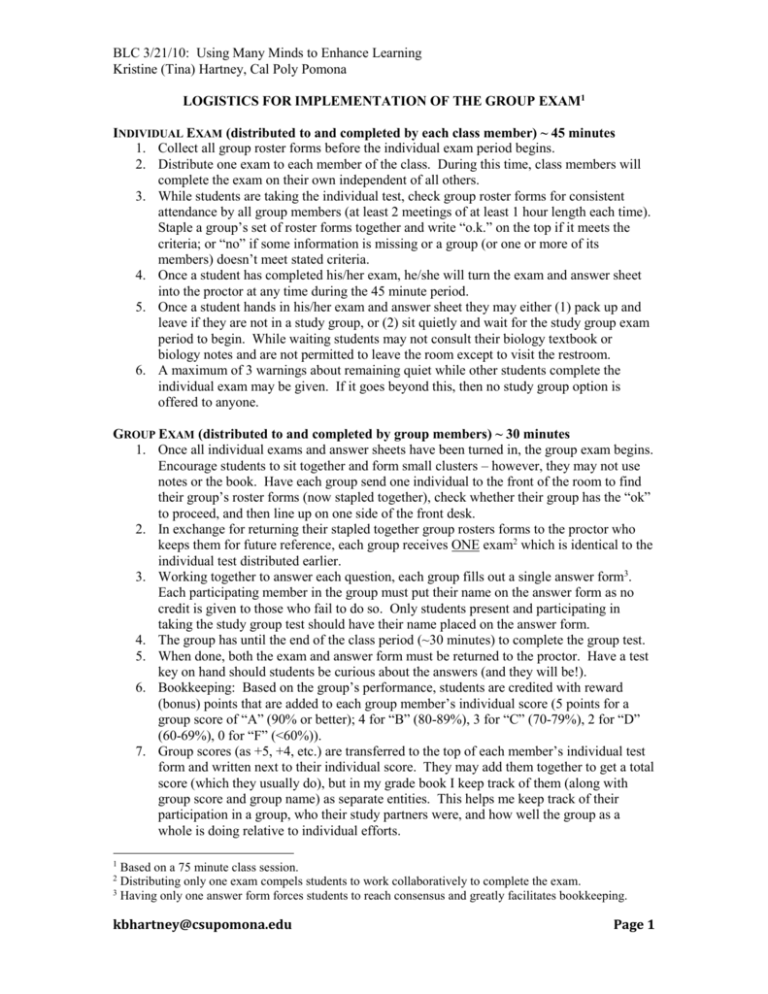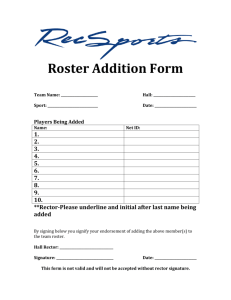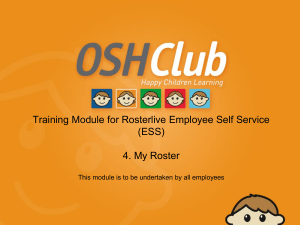Logistics group exam - BiologyLeadershipConference
advertisement

BLC 3/21/10: Using Many Minds to Enhance Learning Kristine (Tina) Hartney, Cal Poly Pomona LOGISTICS FOR IMPLEMENTATION OF THE GROUP EXAM1 INDIVIDUAL EXAM (distributed to and completed by each class member) ~ 45 minutes 1. Collect all group roster forms before the individual exam period begins. 2. Distribute one exam to each member of the class. During this time, class members will complete the exam on their own independent of all others. 3. While students are taking the individual test, check group roster forms for consistent attendance by all group members (at least 2 meetings of at least 1 hour length each time). Staple a group’s set of roster forms together and write “o.k.” on the top if it meets the criteria; or “no” if some information is missing or a group (or one or more of its members) doesn’t meet stated criteria. 4. Once a student has completed his/her exam, he/she will turn the exam and answer sheet into the proctor at any time during the 45 minute period. 5. Once a student hands in his/her exam and answer sheet they may either (1) pack up and leave if they are not in a study group, or (2) sit quietly and wait for the study group exam period to begin. While waiting students may not consult their biology textbook or biology notes and are not permitted to leave the room except to visit the restroom. 6. A maximum of 3 warnings about remaining quiet while other students complete the individual exam may be given. If it goes beyond this, then no study group option is offered to anyone. GROUP EXAM (distributed to and completed by group members) ~ 30 minutes 1. Once all individual exams and answer sheets have been turned in, the group exam begins. Encourage students to sit together and form small clusters – however, they may not use notes or the book. Have each group send one individual to the front of the room to find their group’s roster forms (now stapled together), check whether their group has the “ok” to proceed, and then line up on one side of the front desk. 2. In exchange for returning their stapled together group rosters forms to the proctor who keeps them for future reference, each group receives ONE exam2 which is identical to the individual test distributed earlier. 3. Working together to answer each question, each group fills out a single answer form3. Each participating member in the group must put their name on the answer form as no credit is given to those who fail to do so. Only students present and participating in taking the study group test should have their name placed on the answer form. 4. The group has until the end of the class period (~30 minutes) to complete the group test. 5. When done, both the exam and answer form must be returned to the proctor. Have a test key on hand should students be curious about the answers (and they will be!). 6. Bookkeeping: Based on the group’s performance, students are credited with reward (bonus) points that are added to each group member’s individual score (5 points for a group score of “A” (90% or better); 4 for “B” (80-89%), 3 for “C” (70-79%), 2 for “D” (60-69%), 0 for “F” (<60%)). 7. Group scores (as +5, +4, etc.) are transferred to the top of each member’s individual test form and written next to their individual score. They may add them together to get a total score (which they usually do), but in my grade book I keep track of them (along with group score and group name) as separate entities. This helps me keep track of their participation in a group, who their study partners were, and how well the group as a whole is doing relative to individual efforts. 1 Based on a 75 minute class session. Distributing only one exam compels students to work collaboratively to complete the exam. 3 Having only one answer form forces students to reach consensus and greatly facilitates bookkeeping. 2 kbhartney@csupomona.edu Page 1 SYLLABUS MODIFICATIONS These are the words I have added under the header: Grading Criteria to explain the study group concept, process, and value to students. Group exams are an option for all tests that I give including the final. Exams: Two midterm exams (@ 100 pts.) and a final exam (@ 150 pts.) will be given. Exams will consist of objective types of questions (multiple choice, true/false) that emphasize factual information, problem solving, connections, and synthesis. Each exam will be completed individually within the first 45 minutes of the exam period. After this time, official study groups (see description below) may retake the exam utilizing the collective knowledge of the group to improve their individual scores (5 "reward" points added for a group score of “A”; 4 for “B”, 3 for “C”, 2 for “D”, 0 for “F”). See the course schedule for examination dates. Study Groups: Studying as a member of a group can be very beneficial and you are encouraged to form or join a study group. To be recognized as an “official” study group and qualify to retake an exam as a group, the study group must: (1) consist of at least 3 and not more than 7 persons (all of whom are registered for the same section), (2) meet as an entire group for at least 1 hour on two separate occasions prior to an exam, and (3) turn in at least two Group Meeting Rosters (available on Blackboard course site) prior to or at the time of the exam. A student may participate in only one official study group at a time. Groups may be dissolved and reformed after an exam, however, the 2-meeting rule will always be enforced relative to the next group exam opportunity. The group may find it useful to establish fixed places and times to meet and contact information should be exchanged among all participants. Study sessions should be designed to last at least one hour to share notes, discuss course content, solve problems, complete study guide questions, and/or study for exams. All members of the group must attend meetings and during that time completely fill out and sign a single Group Roster Form (available on Blackboard course site). It might be wise to designate a single representative within your group to keep track of and hand in the group roster forms prior to the exam. In retaking the exam, the group will fill out a single SCANTRON form with all group members’ names on it. A group member must participate in retaking the exam in order to receive “reward” points. kbhartney@csupomona.edu Page 2





